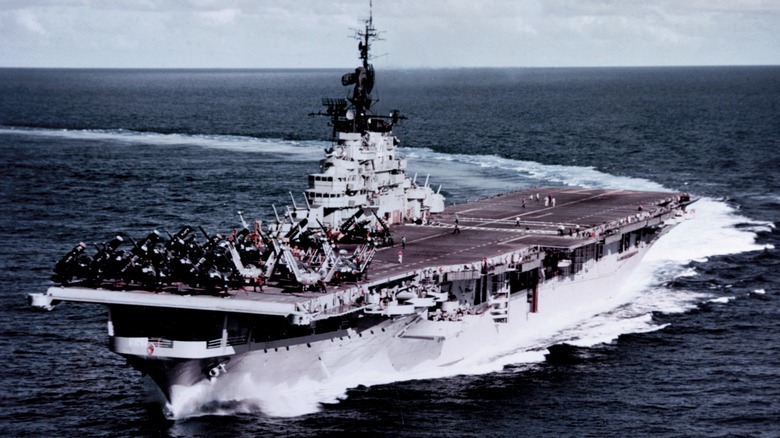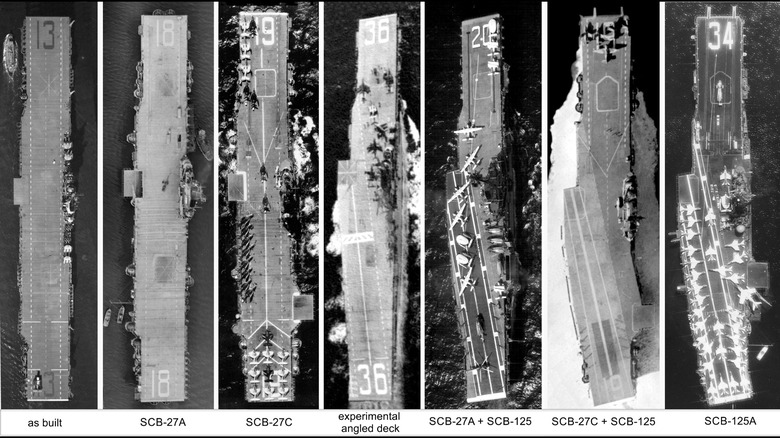Today's US Navy Could Learn A Lesson From The Era Of Essex-Class Aircraft Carriers
When the Imperial Japanese Navy attacked Pearl Harbor on December 7, 1941, it unknowingly altered the future of the aircraft carrier. While carriers were seen as support ships up to that point, some saw the potential for more. To that end, the United States had already begun constructing new and improved carriers via the Naval Act of 1938. When Japan sank the Pacific Fleet's battleships while its three carriers were elsewhere, it accelerated the timeline, placing carriers as the lead capital ships in the Pacific.
This allowed the newly designed Essex-class carrier to shine, becoming a workhorse for the U.S. Navy throughout WWII. By the end of the war, the U.S. had constructed 24 Essex-class carriers, and not a single one was lost to enemy action. Several were severely damaged, but they always managed to return to the fight. When the war ended, construction of the Essex-class carriers was halted, and orders for more were canceled — the U.S. was looking to the future, which would eventually see the Essex-class carriers give way to the Midway-class and, eventually, supercarriers.
While modern carriers like the USS Gerald R. Ford (CVN-78) are significantly more advanced, the Essex-class carrier fleet were engineered for growth and expansion. They remained fully mission-capable for decades by adapting to technological and tactical changes. This allowed naval operations to be built around carriers, developing into Carrier Strike Groups and the lead ships of every major blue-water navy on the planet.
The ever-changing nature of Essex-class aircraft carriers
The key feature that set the Essex-class carrier apart from its predecessor and successor was its adaptability. While they were initially constructed with a straight deck, this design eventually gave way to an angled flight deck, which is the standard in modern carrier construction. Redesigning an aircraft carrier's flight deck isn't a small task, and it wouldn't have surprised anyone had the Navy retired these old carriers in favor of Midway, Kitty Hawk, or Enterprise-class carriers.
While some Essex-class ships were retired, many received upgrades. Fifteen Essex-class carriers were modified to accommodate jets, and they were ideally suited for this, thanks to their large hangars. They required jet-blast deflectors, improved launch and recovery systems, and eventually, the angled deck. This enabled these older carriers to remain in the fight through the Vietnam War. Eventually, technology outpaced what could be done to keep the Essex-class fleet operational, so their roles were altered.
Several ships were used to pick up astronauts after they splashed down into the ocean, covering the Mercury, Gemini, and Apollo missions. The USS Lexington (CV-16), which is now a museum ship housed at Corpus Christi, Texas, helped blockade Cuba during the Cuban Missile Crisis and was retired in 1991. While modern nuclear-powered supercarriers are expected to serve for 50 years, few believed Essex-class carriers could approach that lifespan. Several ships did, though, proving their worth while suggesting that ship designers not forget the past while paving the way for the future.

